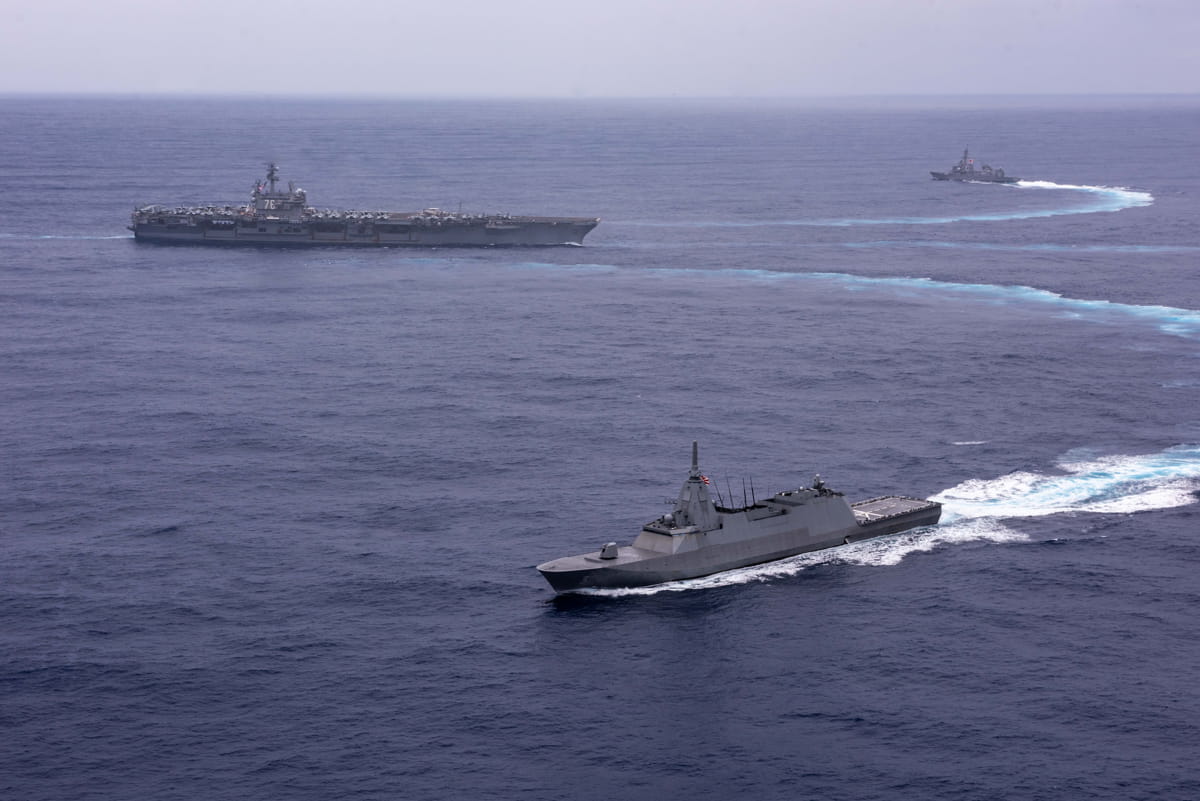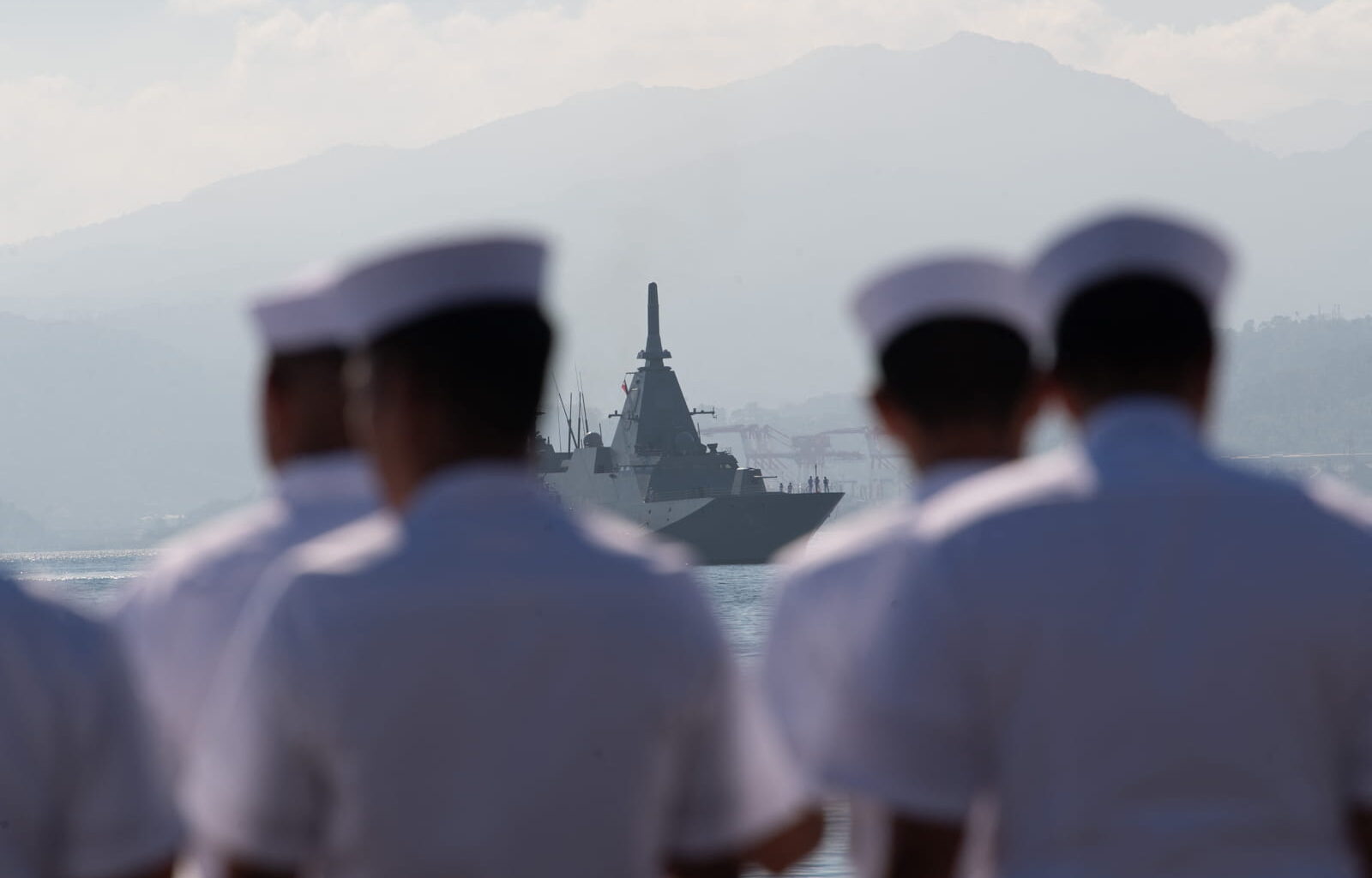Australia’s selection of the Japanese Mogami design for the next generation of general-purpose naval frigates is a welcome fillip for an ageing Royal Australian Navy surface fleet. The Albanese government deserves credit for edging away from the repeated insistence across successive years that major warships be built in Australia. The first three Mogamis will be built in Japan.
It seems Australia is also prepared to accept a more generic design without too many expensive add-ons, although the Australian Mogami design will still have some bespoke elements that create more risks for the project.
The sale is being rightly marked as a breakthrough for Japan’s defence industry. This is a big and prominent deal for a Japanese military-industrial complex which, while highly advanced, has never had export success on this scale.
The temptation to draw far-reaching political conclusions should be resisted. Japan and Australia have been busy upgrading their defence relationship, so together with this deal, the two nations appear to be coming into closer alignment on tackling the China challenge.
The underlying claim appears to be that Australia would capitulate politically if its trade was disrupted. But 20th century history tends to suggest that this kind of pressure has the opposite effect.
But there are clear limits to this convergence because the two nations are so geographically distant, and each has strong economic interests with China to protect. That means Japanese and Australian vital interests won’t sufficiently align for them to form a close strategic partnership directed at China. There is certainly room for much more cooperation, but we should not expect the relationship to blossom into anything like an alliance. Best to think of this frigate deal as a commercial arrangement, and the ships themselves as an Australian capability rather than a mechanism to achieve “jointness” with Japan.
And what capability do the frigates offer Australia? Here the agreement has the potential to open some old lines of discussion. In fact, the Mogami deal will likely feature in a debate on “How to Defend Australia” that the Lowy Institute is staging on Thursday evening between myself and Jennifer Parker from the ANU’s National Security College. If you’re in Sydney, tickets are still available. Otherwise, you can watch a livestream via our website.

Mogami-class frigate JS Noshiro, foreground, breaks away during exercises with the US Navy in the Philippine Sea (Caroline H. Lui/US Navy Photo)
The argument I will make is that while general-purpose frigates are useful for Australia, particularly in a range of activities in lower-threat environments such as the Pacific Islands region, Deputy Prime Minister Richard Marles is wrong to claim that “The upgraded Mogami-class frigate will help secure our maritime trade routes”. Marles has made a similar argument for why Australia is buying nuclear-powered submarines under the AUKUS arrangement.
The problem is that those trade routes are so long as to be impossible for any navy to fully protect. Besides, it’s hard to see why the effort would be worth it. Australia’s landmass is enormous, and its major ports widely dispersed, so preventing trade from entering or leaving would be a massively costly enterprise for an adversary. And what would be the objective? The underlying claim appears to be that Australia would capitulate politically if its trade was disrupted. But 20th century history tends to suggest that this kind of pressure has the opposite effect, producing a “rally round the flag” sentiment that makes government less likely to cave to the demands of aggressors.
It could be that restricting trade would take Australia out of any potential fight – for instance, if oil supplies were curtailed, Australian and allied forces would soon run out of fuel to conduct wartime operations. But this isn’t a strong argument for the frigates. Rather, it’s a good reason for Australia to develop more resiliency in vital goods, both by storing more of them onshore and by manufacturing them domestically, if necessary. On the vulnerability of oil imports specifically, it’s a strong reason for Australia to speed up the transition to renewable energy and the electrification of its transport system – Australia doesn’t need to import sunshine.
A perennial debate is whether big warships such as the Mogami frigates have become unacceptably vulnerable against a highly capable adversary. I tend to side with those, such as former ASPI defence analyst Andrew Davies, who believe that such ships cannot overcome the threat of modern sea-skimming anti-ship missiles and (more recently) naval drones. Or at least, ships cannot survive in these conditions without unacceptably high costs in self-defence weapons.
There is, of course, widespread disagreement on this question. For one entertaining and bloodcurdling counterpoint, I would recommend a 2013 essay in the Naval War College Review by former Soviet naval officer Maksim Tokarev, who described Soviet tactics for attacking American aircraft carriers with “Backfire” bombers carrying anti-ship missiles. The Soviets expected to suffer losses of up to 50% against the American fleet, with uncertain chances of actually sinking a carrier. By Tokarev’s account, the Soviets did not even bother planning for how their planes would return from such a mission:
A young second lieutenant, a Backfire weapon systems operator fresh from the air college, asked the senior navigator of the regiment, an old major: “Sir, tell me why we have a detailed flight plan to the target over the vast ocean, but only a rough dot-and-dash line across Hokkaido Island on the way back?” “Son,” answered the major calmly, “if your crew manages to get the plane back out of the sky over the carrier by any means … no matter whether it’s somewhere over Hokkaido or directly through the moon, it’ll be the greatest possible thing in your entire life!”
